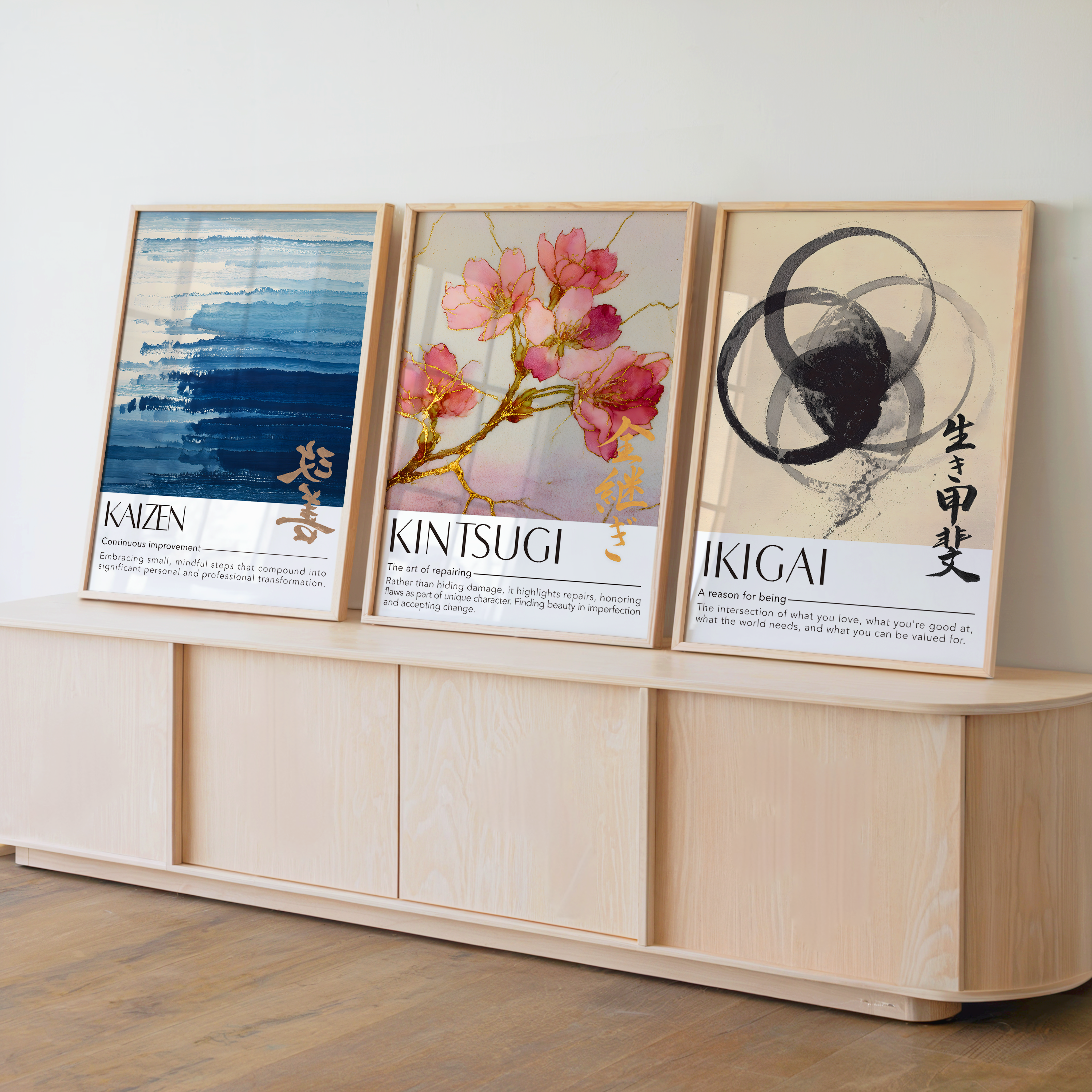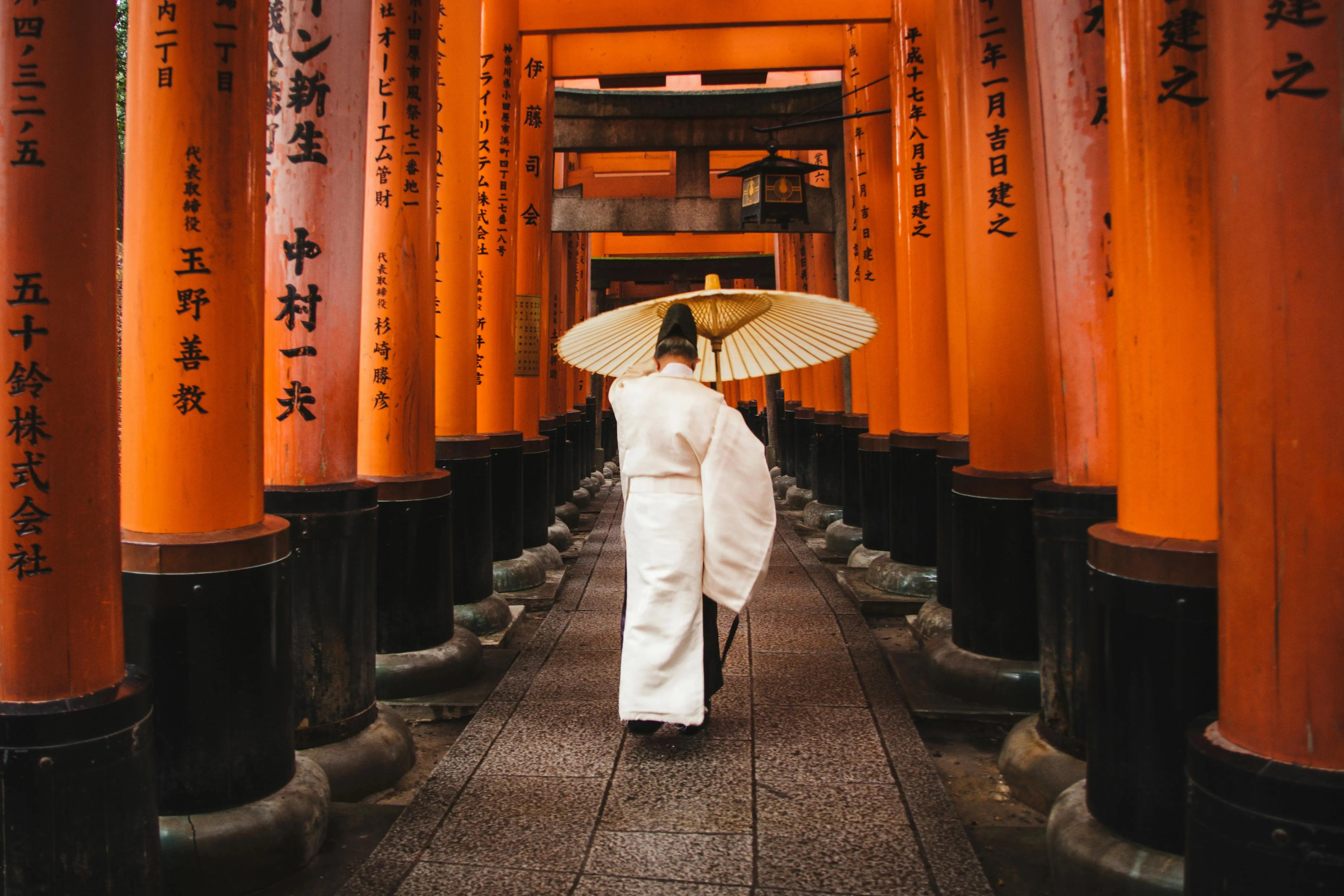
Why Japanese Prints Have a Red Stamp? History, Meaning & Value
It starts like this:
You’re staring at a beautiful Japanese art print — maybe The Great Wave, or a delicate crane balanced under a pine tree. The lines are precise. The colors? Subtle and perfect.
But then your eyes drift to the corner…
🔴 A small red mark.
And just like that, you’re no longer just a viewer, you’re curious.
What is it?
A name? A symbol? A secret code?
This little red stamp might seem like a small detail, but in the world of Japanese print design, it carries centuries of history, craftsmanship, and cultural identity.
In the tradition of Japanese woodblock printing — especially during the Edo period — artists didn’t sign their work with a pen or pencil.
They used red stamps called hanko (判子) or inkan (印鑑).
Every artist, publisher, and sometimes even collector, had their own custom-made stamp. It was carved by hand, dipped in thick vermilion ink (shuniku), and pressed gently onto each finished print.
This wasn’t just a signature.
It was a mark of pride.
A declaration: “I made this. I stand by this.”
In a time before branding or QR codes, the red stamp was both a badge of honor and a guarantee of authenticity.
🧧 But Why Red?
Good question.
The ink traditionally used is called shuniku, made from natural minerals like cinnabar. The result? A glowing, powerful vermilion red that lasts centuries without fading.
In Japanese culture, red isn’t just a color. It’s a symbol of:
-
Life
-
Protection
-
Authority
-
Celebration
So when an artist uses red to stamp their work, they’re sealing it with more than ink — they’re sealing it with intention.
A Journey Through Time (Told in Stamps)
Look closely at any vintage Japanese print and you’ll likely find not just one, but several red stamps.
Why?
Because each print often passed through:
-
The artist, who created the design
-
The carver, who chiseled it into wood
-
The printer, who applied each layer of color
-
The publisher, who funded and sold it
-
And sometimes even the collector, who proudly owned it
Every stamp adds a new chapter to the story of the print.
And yes — these stamps help date and authenticate prints, which is why serious collectors always study them carefully.
The Red Stamp Today: Still Relevant, Still Respected
Even in today’s digital world, Japanese artists still use red stamps to sign calligraphy, paintings, and even personal documents.
It’s a living tradition — one that connects the past to the present with just a press of the hand.
In our collection, you’ll find this rich legacy alive in works like:
-
“Roaring Tiger” – with bold movement and a seal of strength
-
“The Frog” by Matsumoto Hoji – a small creature with big symbolism
-
“Red Fuji” by Hokusai – a calm mountain crowned by a master’s mark
Each one carries that same iconic stamp. Quiet. Confident. Timeless.
Shop Prints with a Story — and a Stamp to Match
When you hang a Japanese print in your space, you’re not just decorating — you’re telling a story.
At House of Koyomi, we bring you prints that:
-
Are crafted using museum-quality Japanese paper
-
Recreate historic works with precision and respect
-
Feature the signature red stamps that make them feel real
Explore our collection and bring home a piece of history, sealed with heart.








